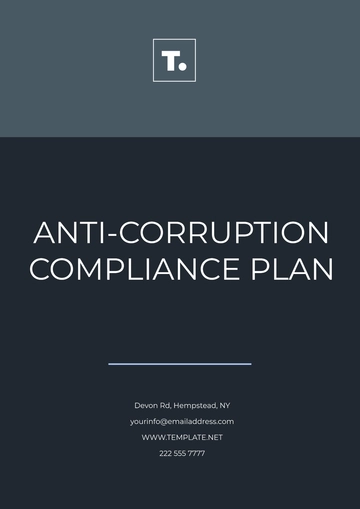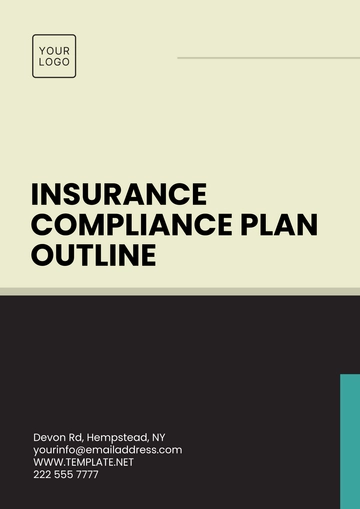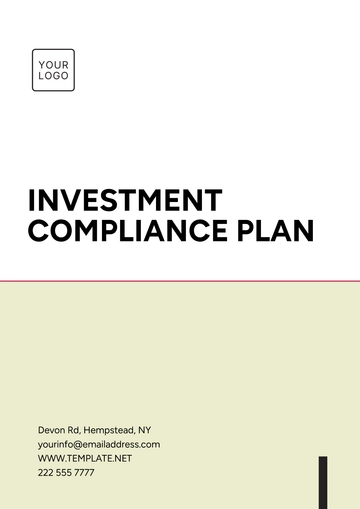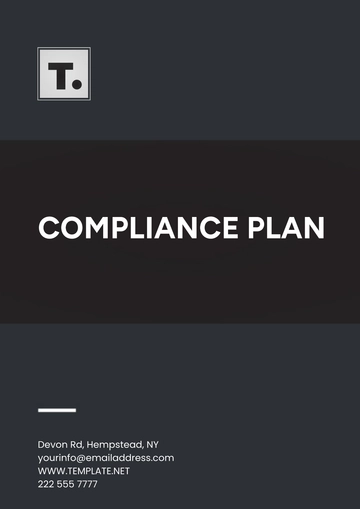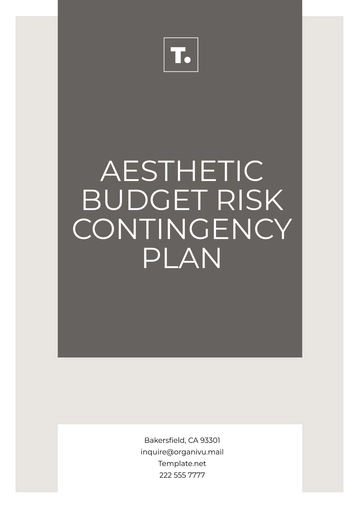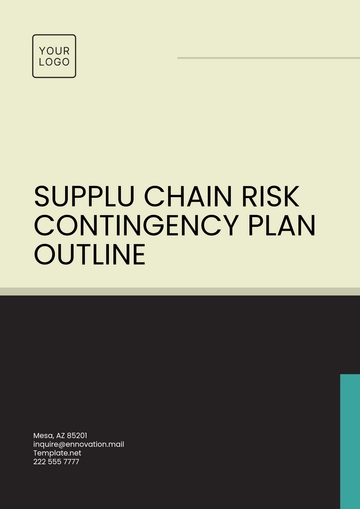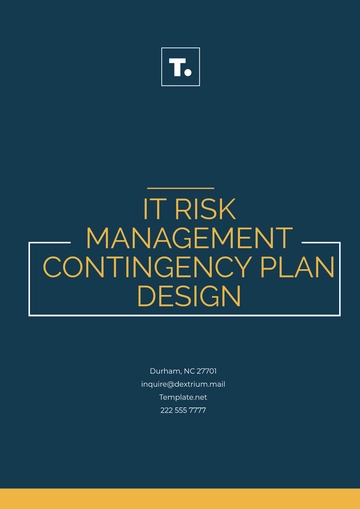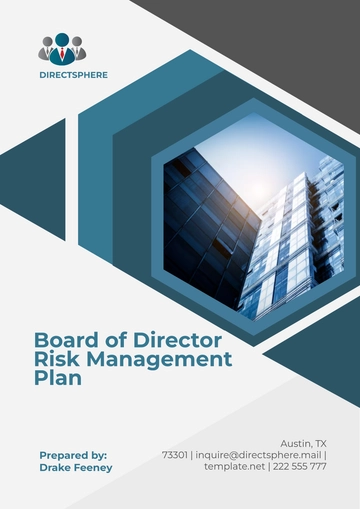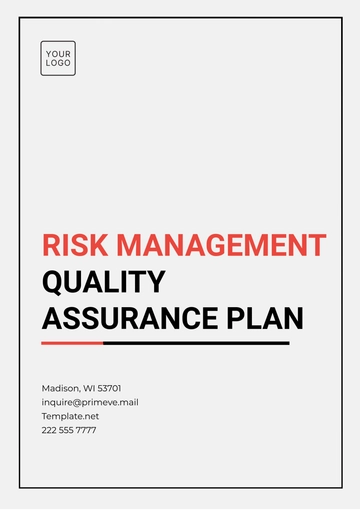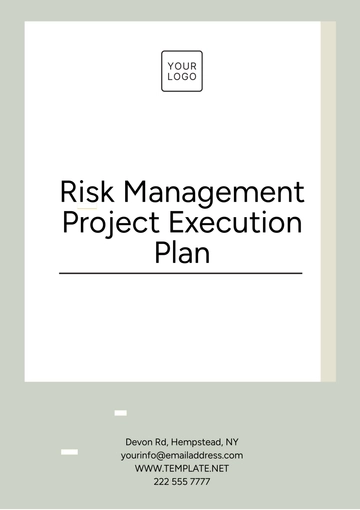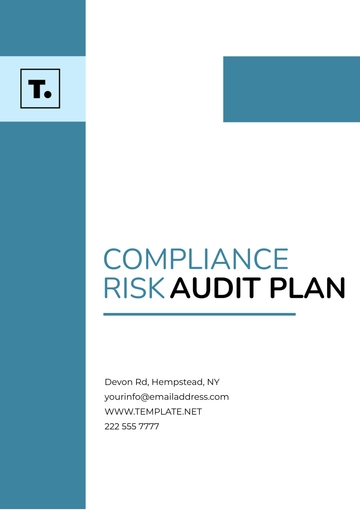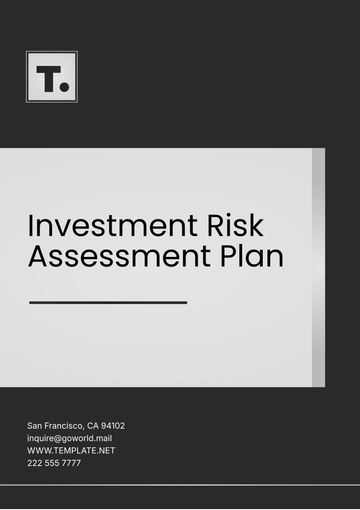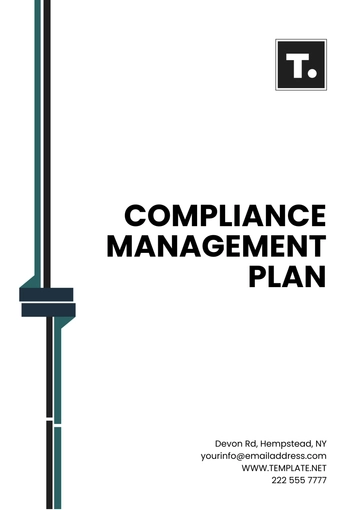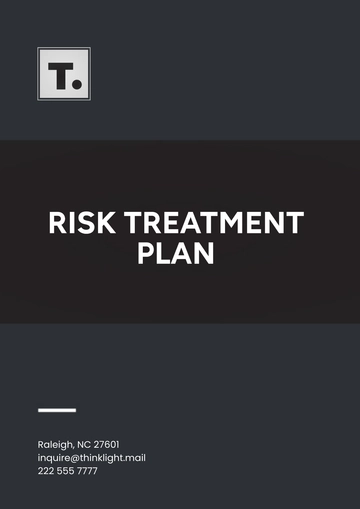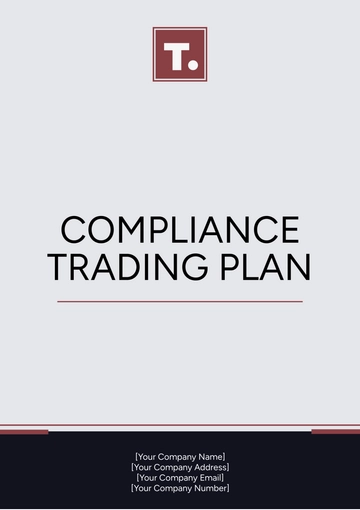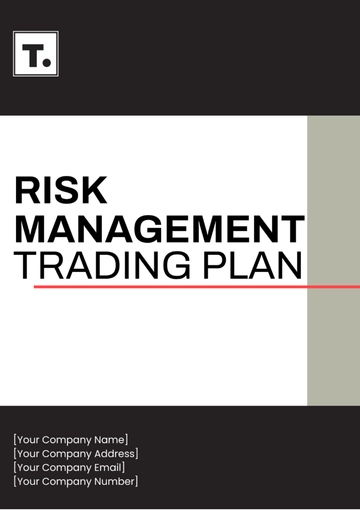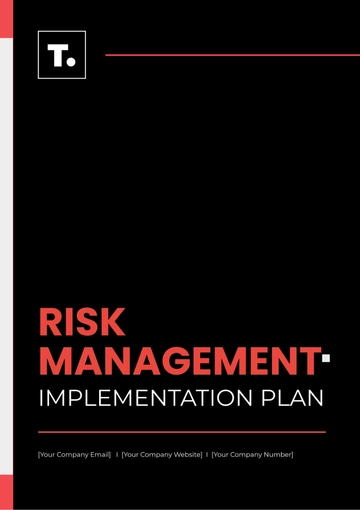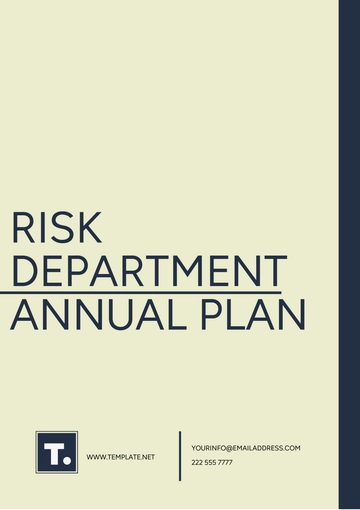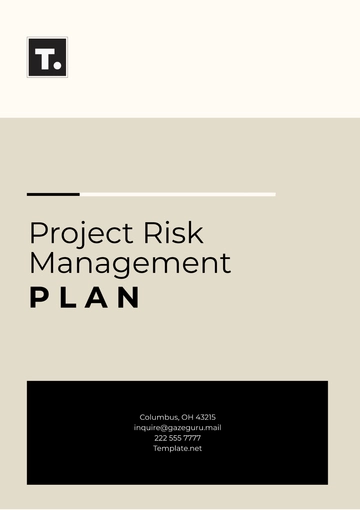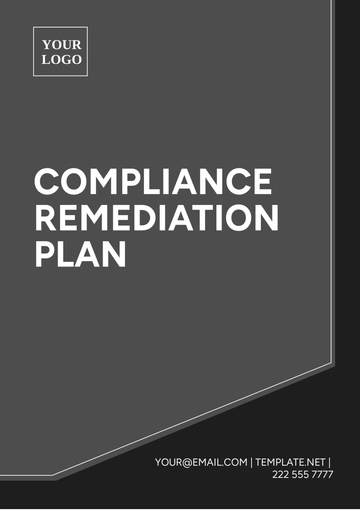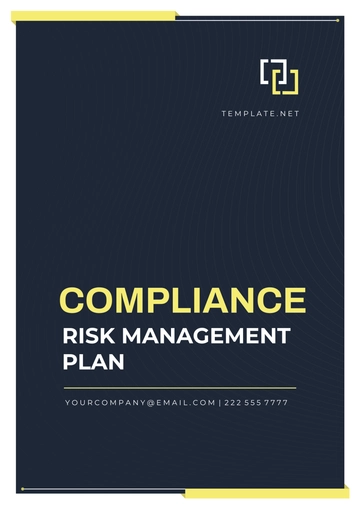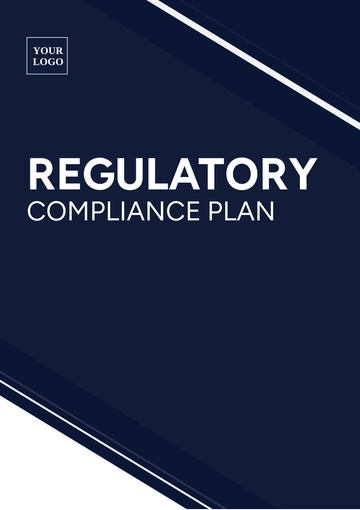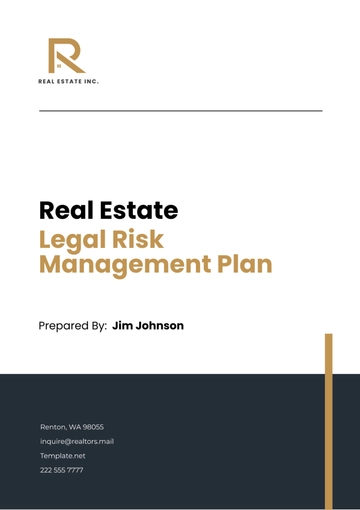Free Investment Risk Assessment Plan
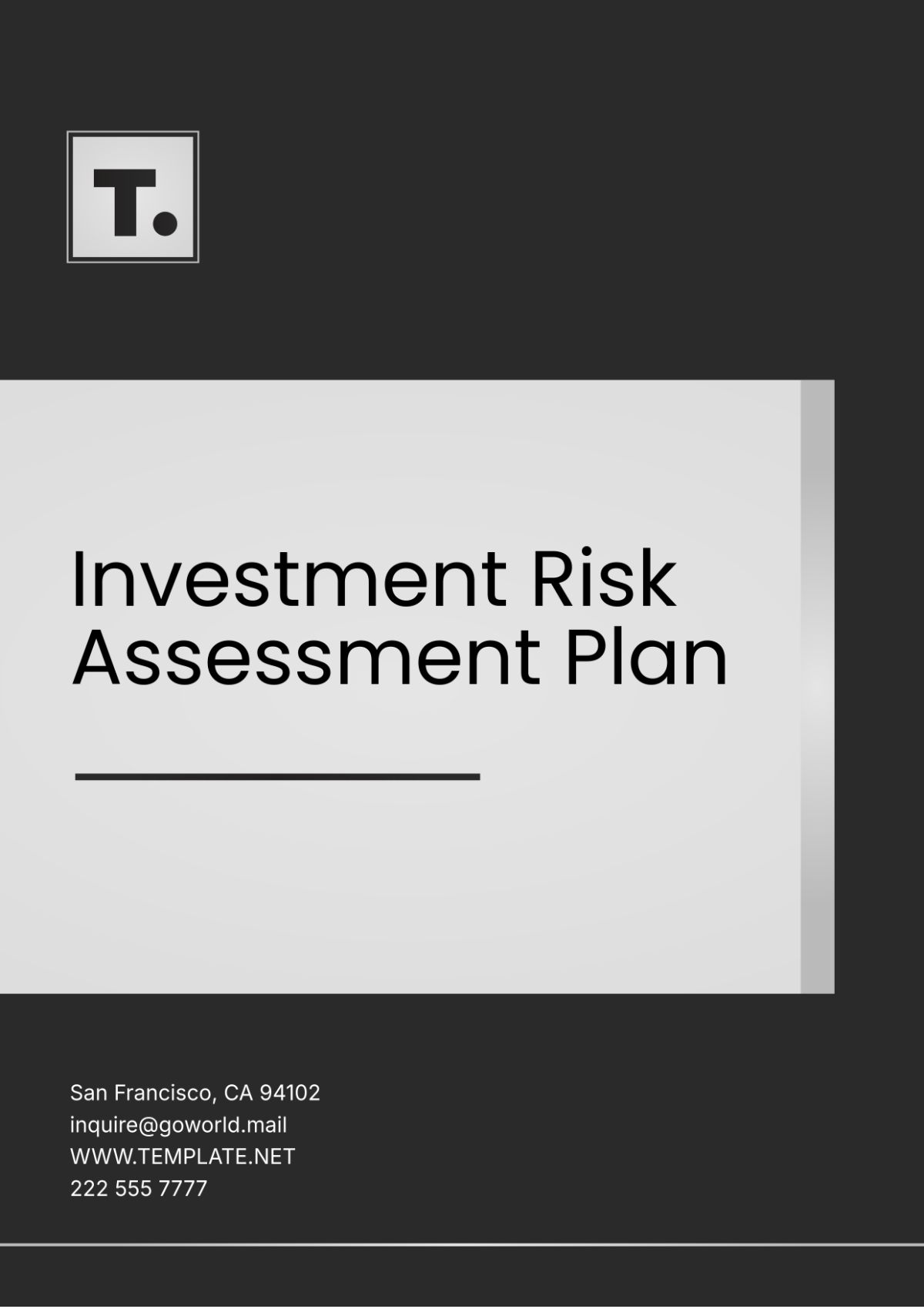
Prepared by: [Your Name]
Date: October 28, 2056
1. Executive Summary
This Investment Risk Assessment Plan evaluates the risks associated with the company's investment in the Global Real Estate Fund. Given recent market volatility and regulatory changes, this assessment provides an overview of identified risks, analysis methodology, and recommended mitigation strategies. Our findings suggest that while the potential returns are promising, heightened market and regulatory risks require careful monitoring and mitigation.
2. Scope and Objectives
Scope:
The assessment focuses on the company's $10 million investment in the Global Real Estate Fund, which includes properties across Europe, Asia, and North America.
Objectives:
Identify key risks impacting the fund's performance.
Quantify the potential losses under various economic conditions.
Develop strategies to minimize or manage these risks.
3. Risk Identification
Key risks associated with the investment include:
Market Risk: High exposure to fluctuations in real estate prices in foreign markets, especially in regions with economic instability.
Credit Risk: Counterparty risks with local property developers and financiers.
Operational Risk: Potential operational inefficiencies or mismanagement in different regions.
Liquidity Risk: Limited ability to quickly sell properties in underperforming markets without incurring losses.
Regulatory and Legal Risk: Compliance challenges with varying property laws and regulations across multiple jurisdictions.
Reputational Risk: Potential negative impact on investor confidence due to unfavorable media coverage or market perception.
4. Risk Assessment Methodology
The following methods are used to assess and quantify risks:
Scenario Analysis: Examining potential outcomes based on high, medium, and low market performance.
Value-at-Risk (VaR): Calculating potential loss amounts under normal market conditions.
Stress Testing: Simulating extreme market conditions, such as sudden economic downturns or regulatory changes.
5. Risk Measurement and Quantification
Market Risk Exposure: Calculated with a 95% VaR confidence interval, projecting a potential loss of up to $1.2 million in an adverse market scenario.
Credit Risk Exposure: The probability of default for each region is assigned based on credit ratings, with a combined 10% potential risk exposure.
Liquidity Risk Measurement: The liquidity ratio indicates that it may take up to 12 months to liquidate all assets in a downturn, with a potential 20% loss on quick sales.
Stress Test Results: Under a severe downturn, potential losses could reach up to $3 million due to simultaneous declines in property values and liquidity constraints.
6. Risk Mitigation Strategies
Diversification: Allocating funds across multiple geographic regions to reduce concentration risk.
Hedging: Implementing foreign exchange hedging to manage currency fluctuations.
Credit Checks and Monitoring: Regularly assessing the creditworthiness of project partners and tenants.
Contingency Planning: Establishing quick-response teams to manage operational and legal risks.
Exit Strategies: Predefining thresholds for property performance to allow timely liquidation of underperforming assets.
7. Monitoring and Review Process
Quarterly Reviews: Risk levels will be reviewed and reported to the board quarterly.
Key Risk Indicators (KRIs): Monitoring property values, occupancy rates, and regional economic indicators.
Regular Updates: Adjustments to the risk assessment and mitigation strategies based on changes in the market and regulatory environment.
8. Documentation and Reporting
All assessment reports mitigation measures, and ongoing monitoring activities will be documented in the company's Risk Management Information System (RMIS). Risk assessment reports will be shared with the investment committee and stakeholders every quarter or as needed.
9. Conclusion
This plan identifies and mitigates risks for the Global Real Estate Fund, enabling informed decisions to meet investment goals. Regular monitoring ensures effective risk management amidst market and regulatory changes, safeguarding investments and promoting growth.
- 100% Customizable, free editor
- Access 1 Million+ Templates, photo’s & graphics
- Download or share as a template
- Click and replace photos, graphics, text, backgrounds
- Resize, crop, AI write & more
- Access advanced editor
You may also like
- Finance Plan
- Construction Plan
- Sales Plan
- Development Plan
- Career Plan
- Budget Plan
- HR Plan
- Education Plan
- Transition Plan
- Work Plan
- Training Plan
- Communication Plan
- Operation Plan
- Health And Safety Plan
- Strategy Plan
- Professional Development Plan
- Advertising Plan
- Risk Management Plan
- Restaurant Plan
- School Plan
- Nursing Home Patient Care Plan
- Nursing Care Plan
- Plan Event
- Startup Plan
- Social Media Plan
- Staffing Plan
- Annual Plan
- Content Plan
- Payment Plan
- Implementation Plan
- Hotel Plan
- Workout Plan
- Accounting Plan
- Campaign Plan
- Essay Plan
- 30 60 90 Day Plan
- Research Plan
- Recruitment Plan
- 90 Day Plan
- Quarterly Plan
- Emergency Plan
- 5 Year Plan
- Gym Plan
- Personal Plan
- IT and Software Plan
- Treatment Plan
- Real Estate Plan
- Law Firm Plan
- Healthcare Plan
- Improvement Plan
- Media Plan
- 5 Year Business Plan
- Learning Plan
- Marketing Campaign Plan
- Travel Agency Plan
- Cleaning Services Plan
- Interior Design Plan
- Performance Plan
- PR Plan
- Birth Plan
- Life Plan
- SEO Plan
- Disaster Recovery Plan
- Continuity Plan
- Launch Plan
- Legal Plan
- Behavior Plan
- Performance Improvement Plan
- Salon Plan
- Security Plan
- Security Management Plan
- Employee Development Plan
- Quality Plan
- Service Improvement Plan
- Growth Plan
- Incident Response Plan
- Basketball Plan
- Emergency Action Plan
- Product Launch Plan
- Spa Plan
- Employee Training Plan
- Data Analysis Plan
- Employee Action Plan
- Territory Plan
- Audit Plan
- Classroom Plan
- Activity Plan
- Parenting Plan
- Care Plan
- Project Execution Plan
- Exercise Plan
- Internship Plan
- Software Development Plan
- Continuous Improvement Plan
- Leave Plan
- 90 Day Sales Plan
- Advertising Agency Plan
- Employee Transition Plan
- Smart Action Plan
- Workplace Safety Plan
- Behavior Change Plan
- Contingency Plan
- Continuity of Operations Plan
- Health Plan
- Quality Control Plan
- Self Plan
- Sports Development Plan
- Change Management Plan
- Ecommerce Plan
- Personal Financial Plan
- Process Improvement Plan
- 30-60-90 Day Sales Plan
- Crisis Management Plan
- Engagement Plan
- Execution Plan
- Pandemic Plan
- Quality Assurance Plan
- Service Continuity Plan
- Agile Project Plan
- Fundraising Plan
- Job Transition Plan
- Asset Maintenance Plan
- Maintenance Plan
- Software Test Plan
- Staff Training and Development Plan
- 3 Year Plan
- Brand Activation Plan
- Release Plan
- Resource Plan
- Risk Mitigation Plan
- Teacher Plan
- 30 60 90 Day Plan for New Manager
- Food Safety Plan
- Food Truck Plan
- Hiring Plan
- Quality Management Plan
- Wellness Plan
- Behavior Intervention Plan
- Bonus Plan
- Investment Plan
- Maternity Leave Plan
- Pandemic Response Plan
- Succession Planning
- Coaching Plan
- Configuration Management Plan
- Remote Work Plan
- Self Care Plan
- Teaching Plan
- 100-Day Plan
- HACCP Plan
- Student Plan
- Sustainability Plan
- 30 60 90 Day Plan for Interview
- Access Plan
- Site Specific Safety Plan
